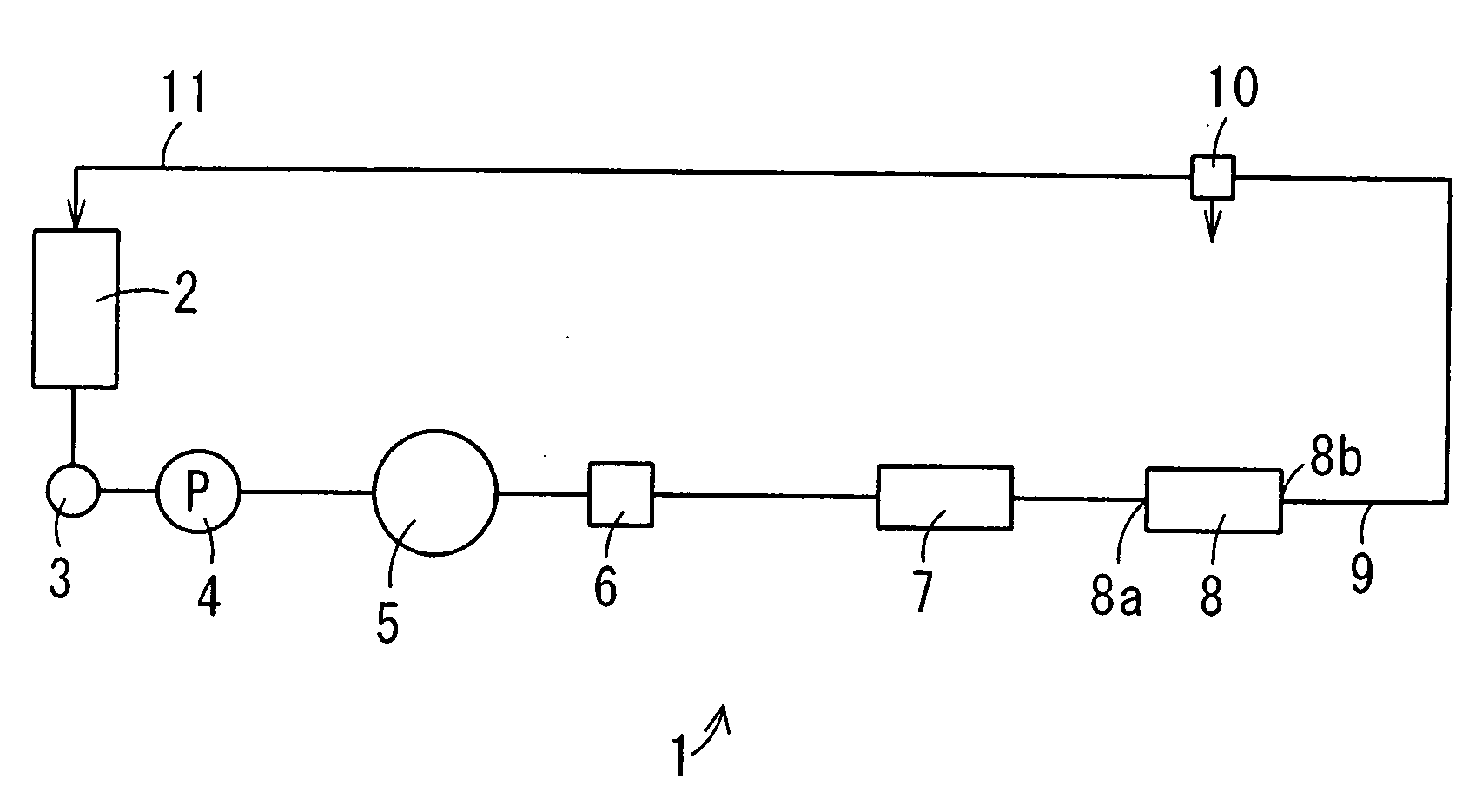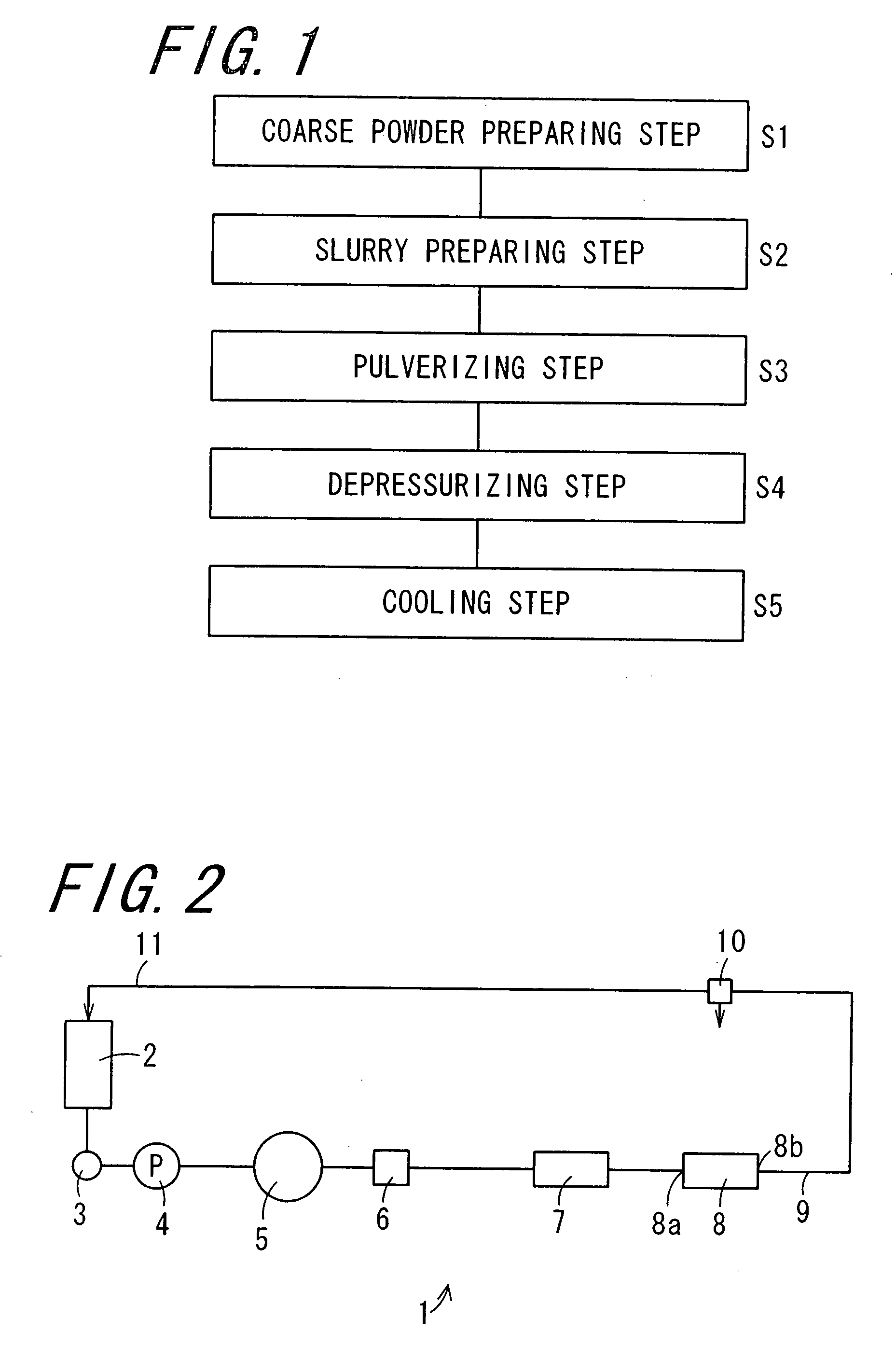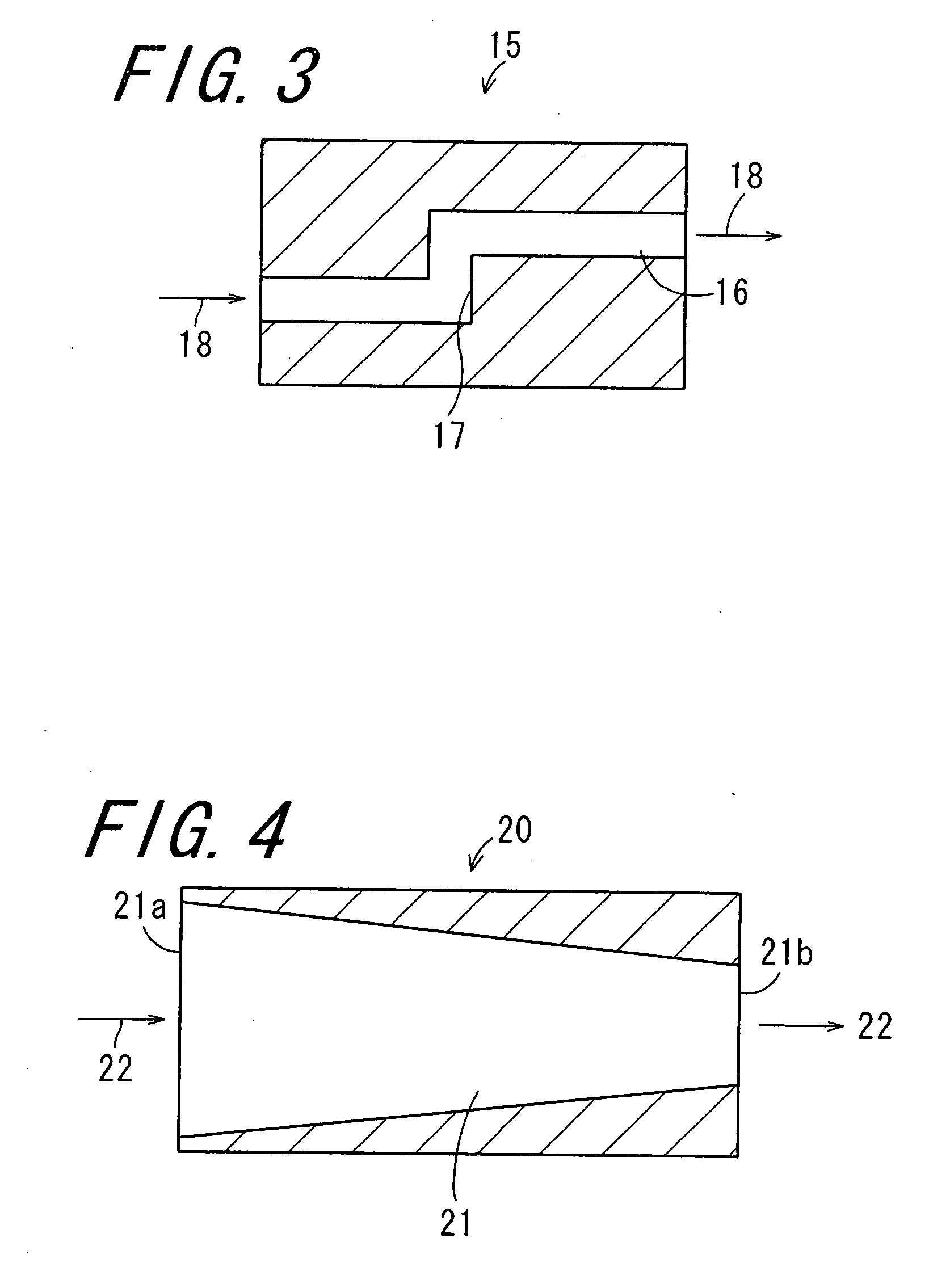Functional particle and manufacturing method thereof
a technology of functional particles and manufacturing methods, applied in the field of functional particles, can solve the problems of image defects, inability to form high-quality images, unevenness in images, etc., and achieve the effects of no fluctuation, excellent retainability or storage, and high fineness
- Summary
- Abstract
- Description
- Claims
- Application Information
AI Technical Summary
Benefits of technology
Problems solved by technology
Method used
Image
Examples
production example 1
[0124][Preparation of Coarse Powder Slurry]
[0125]100 parts of a polyester resin (glass transition temperature Tg: 60° C., softening temperature Tm: 110° C.) were melted and kneaded by a twin screw extruder (PCM-30, trade name of products manufactured by Ikegai Ltd.) at a cylinder temperature of 145° C. and a number of rotation of a barrel of 300 rpm to prepare a molten kneaded mixture for a toner material. After cooling the molten kneaded product to a room temperature, it. was coarsely pulverized by a cutter mill (VM-16; trade name of products manufactured by SEISHIN ENTERPRISING CO., LTD.), to prepare a coarse powder with a grain size of 100 μm or less. 40 g of the coarse powder, 13.3 g of xanthan gum, 4 g of sodium dodecyl benzene sulfonate (LUNOX S-100, trade name of products for anionic dispersant manufactured by Toho Chemical Industry Co., Ltd.), 0.67 g of sulfosuccinic acid surfactant (trade name: Airol CT-1P, main ingredient: sodium dioctyl sulfosuccinate salt manufactured by...
production example 2
[0128][Preparation of Core Particles]
[0129]An aqueous slurry containing core particles with a volume average grain size of 4.4 μm, a CV value of 23%, a glass transition temperature of 53° C., and a melting point of 110° C. was prepared in the same manner as the Production Example 2 except for using, instead of 100 parts of the polyester resin, 100 parts of a mixture obtained by mixing 87.5 parts of a polyester resin, 1.5 parts of a charge controller (TRH, trade name of products manufactured by Hodogaya Chemical Co. Ltd.), 3 parts of a polyester wax (melting point: 85° C.), and 8 parts of a colorant (KET. BLUE 111) by a mixer (Henschel mixer, trade name of products manufactured by Mitsui Mining Co).
production example 3
[0130][Preparation of Shell Particles]
[0131]An anchor type stirring blade was attached to a separable flask, and 0.1 parts of ammonium dodecyl sulfonate (emulsifier) dissolved in 390 parts of ion exchanged water was charged and heated to a temperature of 80° C. The temperature was kept at 80° C. and an aqueous solution comprising one part of 2,2′-azobis-2-amidinopropane dihydrochloride (polymerization initiator, V-50, trade name of products manufactured by Wako Pure Chemical Industries Ltd.), and 10 parts of ion exchanged water, and a mixture comprising monomers for polymerization (10 parts of styrene monomer, 40 parts of methyl methacrylate, and 15 parts of n-butyl methacrylate) and one part of octyl thioglycolate (chain transfer agent) were dropped respectively for 60 min. After 30 min from the completion of dropping, a mixed monomer comprising 10 parts of styrene, 15 parts of methyl methacrylate, and 5 parts of n-butyl methacrylate was dropped for 30 min. After completion of the ...
PUM
| Property | Measurement | Unit |
|---|---|---|
| volume average grain size | aaaaa | aaaaa |
| volume average grain size | aaaaa | aaaaa |
| number average particle size | aaaaa | aaaaa |
Abstract
Description
Claims
Application Information
 Login to View More
Login to View More - R&D
- Intellectual Property
- Life Sciences
- Materials
- Tech Scout
- Unparalleled Data Quality
- Higher Quality Content
- 60% Fewer Hallucinations
Browse by: Latest US Patents, China's latest patents, Technical Efficacy Thesaurus, Application Domain, Technology Topic, Popular Technical Reports.
© 2025 PatSnap. All rights reserved.Legal|Privacy policy|Modern Slavery Act Transparency Statement|Sitemap|About US| Contact US: help@patsnap.com



